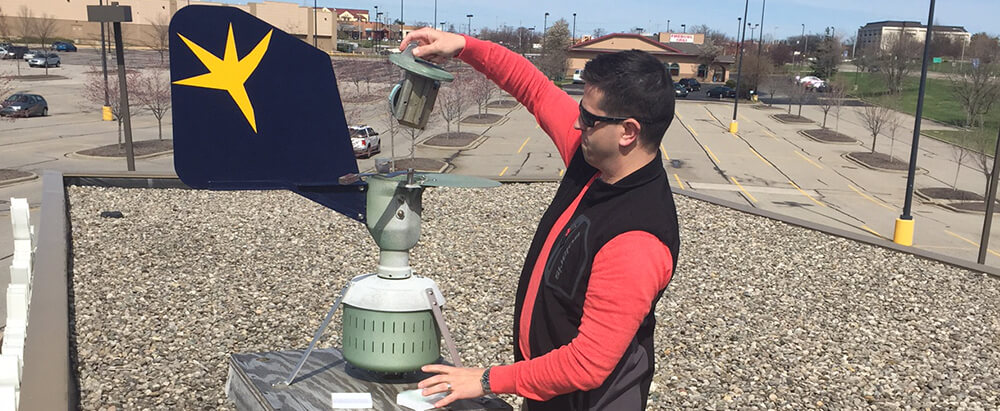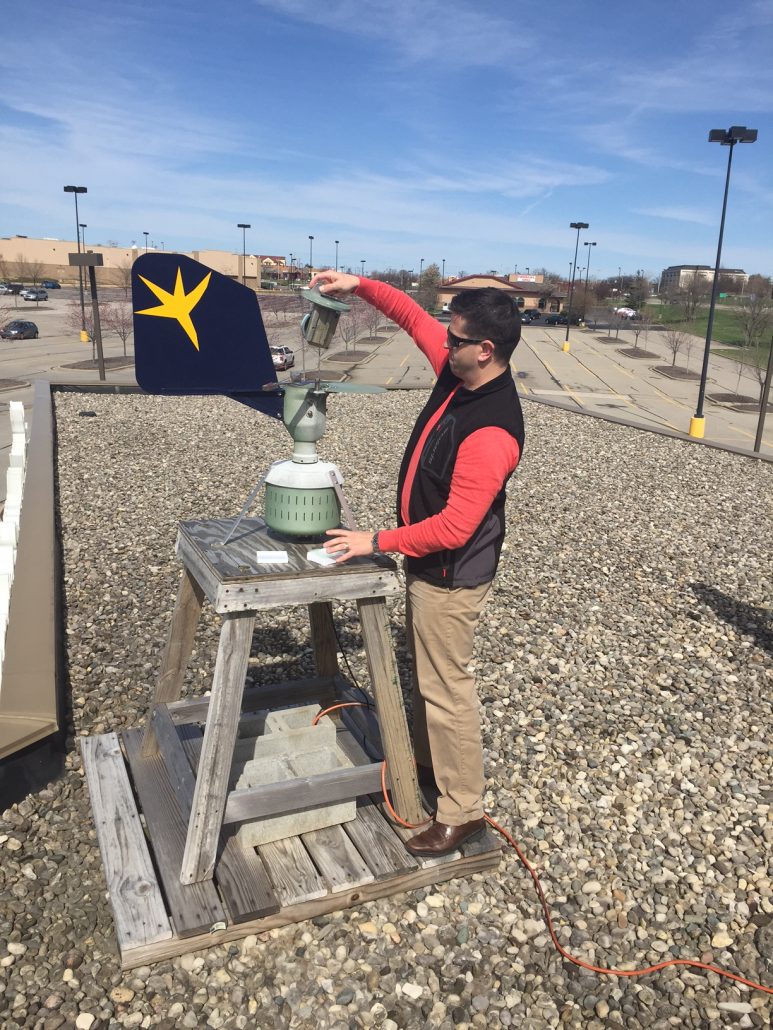What is a Pollen Count?

We talk a lot about pollen here at Family Allergy & Asthma, because it causes many problems for our patients, luckily it’s one we can help. As allergists, it’s important to know what allergens are in our local air to better help our patients. Pollen types can vary from region to region depending on what plants are native and blooming during a specific season. In addition, the season in which plants pollinate can differ due to climate.
We operate two National Allergy Bureau (NAB) certified pollen counting stations in Kentucky. Our stations are located in Louisville and Florence. These stations are checked daily for the pollen and mold counts. Pollen and mold counters must complete certification courses and pass examinations identifying different pollen and mold spores.
What is Pollen?
Pollen is a fine powdery particle-like substance produced by plants to reproduce. While smaller pollen is moved by the wind, larger pollen is transferred by bees and other insects.
Pollen in Kentucky
Technically spring does not start until mid-March, yet we start seeing pollination as soon as the temperatures rise above 50 degrees. Trees are first to pollinate, with cedar and oak pollen appearing in late February or early March, and pine, birch and mulberry pollen appearing in April.
As spring turns to summer we begin to see more grass pollen. A few typical grasses that pollinate in Kentucky are Kentucky bluegrass, bermuda, redtop, orchard and timothy grasses. During the late summer, we’ll begin to find weed pollen in our counts as we enter the fall ragweed season.
How Do We Count Pollen?
We use a Burkard Spore Trap to sample the air. Our machine sits on the roof and collects pollen samples over 24 hours as it rotates with the wind. Our trained pollen counters then collect a slide from the machine and examine it under a microscope counting the pollen grains and mold spores. Once we have those numbers we determine whether they fall into the absent, low, moderate, or high range we show on our website.
Why Do Pollen Counts Matter?
Tracking pollen can help patients manage their allergies. Pollen counts begin to rise during the morning and usually peak around midday. Monitoring pollen can help patients plan accordingly, and avoid going outside during peak pollen hours on days the pollen count is high. We also encourage patients to keep an eye on the pollen count to help them track the days in which their allergies are worse.
Where Can You Find the Pollen Count?
We list the pollen count on the main page of our website! Additionally, you can also find pollen counts on local news stations and Weather.com where they use the information we report to the NAB. Other sources may use previous pollen activity and predictive models to develop their pollen count. These are not always reliable due to the nature of weather especially here in the Kentucky and the Ohio River Valley.
Pollen Counting in Action!
Check out Dr. Otto Collecting the pollen sample from our pollen counting machine in Florence.



Trackbacks & Pingbacks
[…] our pollen counts, we have found that grass pollen levels rise beginning in late Spring during May and last into the […]
Leave a Reply
Want to join the discussion?Feel free to contribute!